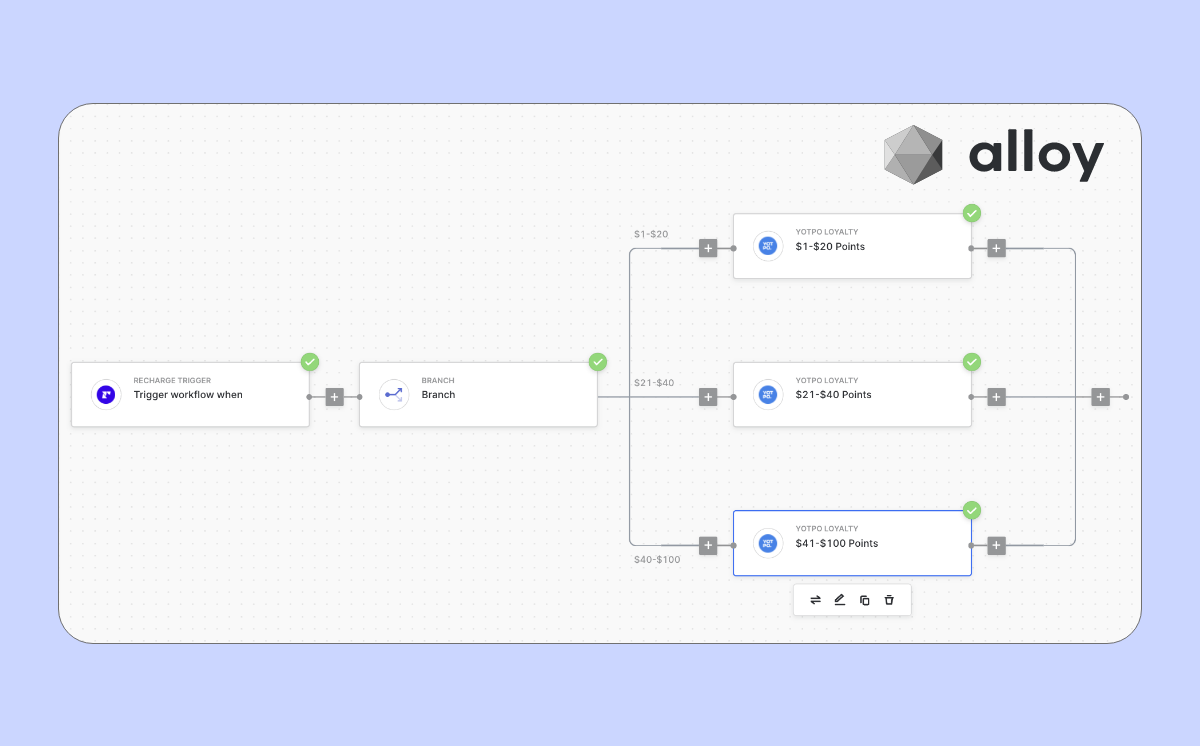Having 24/7 access to anything and everything we want has changed the way we shop. With your customers jumping between your mobile app, your website, and your brick-and-mortar store, you need a new strategy to ensure you’re making the most of your leads.
Enter Omnichannel eCommerce - a way of drawing together all your marketing channels, polishing your customer experience, and maximizing your conversions. Here we break down the ins and outs of omnichannel eCommerce, lay out why it’s the missing piece in your eCommerce business, and show you how other companies are doing it well.
What is omnichannel eCommerce?
Omnichannel eCommerce is when you take all your different marketing channels (email, SMS, your website, mobile app, and physical stores), and join them all up.
Looking for a way to stop roadblocks in the purchase process?
Sick of losing sales between your mobile app and your website?
Seeing great conversions through your SMS campaigns, but not sure how to harness this success for the rest of your business?
You need an omnichannel eCommerce strategy.
Which means you need to spread your efforts across multiple channels to meet your customers where they are and where they enjoy consuming content.
In a eCommerce cross-channel marketing strategy:
1. You merge customer data from across all your digital channels, as well as in-store,
2. You use that data to better understand the purchasing experience, and
3. You take that understanding and create a frictionless, personalized purchasing experience across all your channels.

Pros and cons of omnichannel eCommerce
Pros: An effective omnichannel eCommerce strategy will reduce friction and boost sales as your customers can hop from one channel to another, able to keep their data and preferences. It will also increase your reach - potential customers can find your products wherever they find you! Rather than having to wait until they can make it to your store or are in front of their computer.
Omnichannel eCommerce marketing can also help you:
- Enhance your brand’s credibility
- Deliver great customer service
- Convey a consistent brand message
- Gain a better understanding of your customer’s journey
Cons: An effective omnichannel eCommerce strategy requires a capable eCommerce platform. One that can merge customer data from all your channels, and analyze it effectively. Usually, this requires a heavy financial investment. And you’ll also need a marketing team that can take that customer data, and use it to create personalized, friction-free customer experience. This is no overnight fix.
How does omnichannel eCommerce work?
This marketing approach enables your customer to complete the whole purchasing process using a different channel for each step, if they want to. From sales email, to mobile app, to desktop, to SMS customer service. Whatever works for them.

For example:
1. A customer begins browsing your website on their laptop, adding an item to their cart, but then gets distracted by the delivery man.
2. After lunch they remember what they were doing, and open your mobile app to add 2 more items to their cart.
3. Once they’re done with dinner they finally manage to sit down in front of their laptop and complete the purchase back on your website.
Or it might go something like this:
1. A customer needs to return something. So they click on the link in their purchase email.
2. They complete the returns form online.
3. And then they pop into your brick and mortar store to complete the process and hand the item back to one of your retail assistants.
Omnichannel vs. multichannel eCommerce

But how is this different to multichannel eCommerce where you’re using different channels to connect with different customers? And, if this is no quick fix, should you bother trying something new?
Let’s compare:
Multichannel eCommerce:
- Using different channels (e.g., email, in store, or your website) to sell your products.
- Each channel has its own platform, team, and strategy.
- You may have distinct marketing budgets for each channel.
- The customer data from each channel is kept in a silo.
- A customer can’t hop from one channel to another within the purchase process.
Omnichannel eCommerce:
- You still use different channels to sell your products.
- Customer data from each channel is pulled together.
- This pooled information is used to create a consistent customer experience across all channels.
- A customer can begin a purchase on one channel, and move across to another with all their data synced.
How to create an omnichannel eCommerce Strategy?
Convinced that omnichannel is the way forward? Then you need to start mapping out your omnichannel eCommerce strategy. Thankfully, you don’t need to reinvent the wheel. Here’s how to harness the power of omni for your eCommerce business.
Map your customer journey

Where do your customers come from? Where do they fall out of your funnel?
The first step in creating an omnichannel strategy is to map your customer journey.
Once you know what your customers are doing, you can understand what they need at each point in the purchase process. And you can ensure each of your channels provides it, because every one of your channels matters. Each step is an opportunity to improve the customer experience, learn more about your audience, and remove friction towards the sale.
Know what your channels are for
While all of your channels matter, each one is different. Each digital channel appeals to different customer profiles. Each serves a different purpose, suits different content, and needs to pull different levers to make the sale
You need to understand, for example, that younger customers are more likely to engage with your SMS marketing, while older customers may prefer email.
Or that customer service via a SMS means you can be more responsive than you can via email.
Define the purpose of each channel, and you can start to use them more effectively.
It’s not just about sales
Your omnichannel strategy isn’t just about selling. Communication with your customers continues after purchase, with review requests, FAQs, and customer service support. It includes abandoned cart sequences, and shoutouts on social media.
If a customer asks a question under your instagram post, does your social media team have access to the same information as your customer service team? Or does your customer service team have access to your social media channels?
OG sneaker company, Vans, does a great job of engaging with commenters on their Instagram, reassuring customers that no matter how big a brand is, they still about who their buyers are.

Providing a seamless service across all your channels, reinforcing your brand values, and sticking to your brand voice, means integrating all aspects of your business. Not just the sales team.
Integrate your data analytics

Omnichannel marketing requires a solid handling of all the data. The only way you’ll be able to effectively use customer data is if you integrate everything coming in from across all your channels.
That way you can track conversions and customer experience. And you can spot holes in your strategy, and fill them. You can also test constantly, trying out different content, campaigns, and conversion tactics from your SMS, email, social media, and in store channels. If you have multiple eCommerce stores, access to your data analytics is important to determine operational efficiency and opportunities for each store.
Get everyone on board
If you’re going all in on omnichannel eCommerce, then you need to make sure your organization is structured for success.
What does this mean? It starts with closer collaboration between your sales and marketing teams. We’ve already mentioned how important it is to integrate your customer service team across your channels. But the same is true of across departments.
Ensure everyone is on board with promoting offers, branding, and creating the best experience for customers across all channels. Keep communication lines open and encourage teams to share ideas on new ways to improve engagement and enhance the customer experience.
You need to bring the whole team onboard to pursue an omnichannel strategy effectively. And this strategy should support your overarching omnichannel marketing efforts within your business.
What is an omnichannel eCommerce example?
Disney

Disney prides itself on creating an experience that you’ll always remember. And the Magic Kingdom harnesses omnichannel marketing to reach this lofty goal. Starting with their mobile responsive site (which even makes booking a breeze), they make it easy to deal with your entire trip.
They also offer a mobile app to make online shopping even more personalized, so you can deck yourself out in all the Disney gear for your next trip. You can plan your visit with the My Disney Experience tool. And, when you arrive, their mobile app shows you ride wait times, helping you organize your day.
Wrapping it all together is their new Magic Band - functioning as a hotel key, food ordering tool, and photo storage device.
Starbucks

Another household name, Starbucks has its omnichannel experience down. Thirsty? You can order in person, or online (or even through the mobile app) and pick your drink up in store.
Product info is synced across all channels, so you can always find out what’s available wherever you are. And the customer loyalty program is also synced with real time updates. You can reload your rewards card in store, by phone, on the app, or online and have the balance reflected immediately.
Add to this, their branding is consistent across all channels. Customers know what to expect in terms of language and design, so the whole process feels seamless. A real lesson in the importance of brand recognition.
Oasis UK

UK fashion retailer, Oasis, have taken full advantage of omnichannel marketing strategies to bolster their customer experience. Order through their responsive ecommerce site, their mobile app, or in one of their brick-and-mortar stores.
Once in a store you’ll see helpful assistants with ipads in their hands. These tablets can provide you with up-to-date stock information, take your payment wherever you are on the shop floor, and even order out of stock products to be delivered directly to your door. So you’re never without something stylish to wear.
Best eCommerce platforms for omnichannel business
Shopify

Shopify is our number 1 choice for effective omnichannel eCommerce. Designed to let customers check out with ease on any platform, the POS system also enables integration of in store purchase information with your online customer data.
Shopify harnesses powerful APIs to sync your inventory and purchase information easily, and ensures a seamless experience whichever channel your customer uses.
Find out more about Shopify’s omnichannel capabilities.
BigCommerce

If you’re looking for a platform that allows you to opitmize your eCommerce business for growth, then BigCommerce is for you. It’s designed to deliver personalized experiences without compromising security, stability, or scalability.
Similar to Shopify, it offers an API-driven approach to integrate across multiple platforms.
Find out more about BigCommerce’s omnichannel capabilities.
WooCommerce

For companies who have built out their eCommerce platform on WordPress, it’s worth checking out WooCommerce. WooCommerce is a customizable, open-source eCommerce platform built on WordPress.
It allows for full customization with seamless payment integrations, a long list of extensions to up your omnichannel game, and a mobile app for the ultimate creative control. WooCommerce is a great fit for businesses of all sizes, making it easy to create the experience you want, or get help from a WooCommerce expert if you need it.
Find out more about WooCommerce’s omnichannel capabilities.
Get started with your Omnichannel eCommerce Strategy today
Whichever platform you use, you need to meet your customers where they are, and then make sure you can follow them wherever they go. Do this right, with a complete omnichannel experience, and fewer sales will slip through the net.
In fact, companies using three or more channels in a marketing campaign have seen a 287% higher purchase rate than those companies only using a single channel approach.

%20(1).png)




%20(1).png)
.jpg)


.jpg)
.jpg)


.jpg)





.png)



.png)





.png)


.png)

.png)
.png)

.png)
.png)

.png)

.png)


.png)
.png)
%20(1).png)
.png)









.png)











.png)
.png)

%20(1).png)

%20(1).png)



.png)


























.png)











































.jpeg)



.png)



























.png)



.png)

.png)

.png)
.jpeg)


.png)













.png)

.png)










.png)












.png)






































.png)



.png)

.png)

.png)
.png)

.png)
.png)

.png)

.png)

.png)




.png)




















